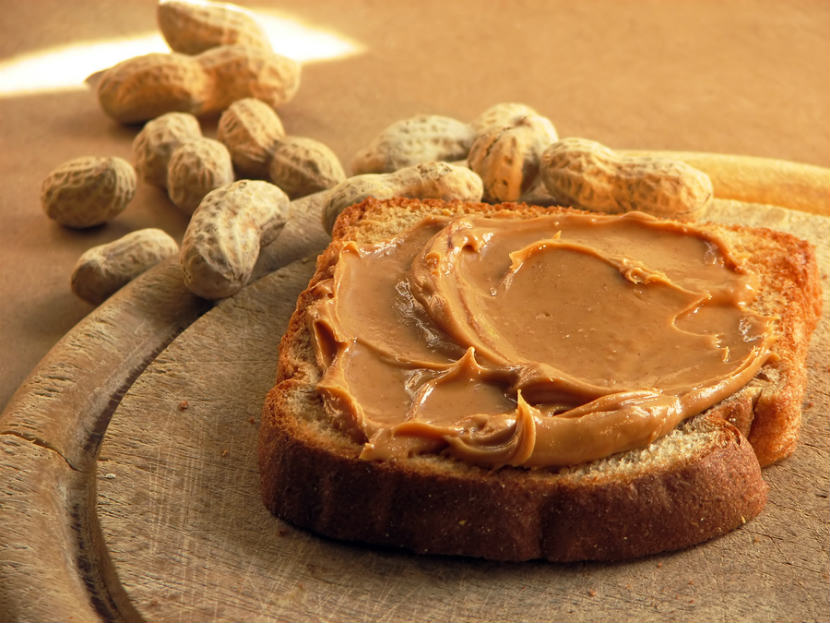
Crunchy or smooth, peanut butter tastes great and is good for you. It also can be used in many ways. Read on for some new peanut butter ideas to try.
Peanut butter is nutritious
-
Peanut butter is made from ground peanuts that have been roasted. Sugar, salt (sodium), oils (fat) and additives that prevent separation may also be added.
-
It is part of the Meat and Alternatives food group in Canada’s Food Guide. One Food Guide serving is 2 Tbsp (30 mL).
-
Peanut butter is a protein-rich meat alternative. It also gives you fibre, healthy fats, vitamin E and folate.
What to look for when buying peanut butter
-
Peanut butter comes in smooth and crunchy. Crunchy peanut butter has small pieces of crushed nuts.
-
The best choice is a peanut butter with one ingredient listed: peanuts. If the peanut butter is made only with nuts, the oil will rise to the top of the jar. Stir the oil back in again each time you use it. Flipping the jar upside down to redistribute the oils helps too.
-
“Natural” peanut butter usually means the peanut butter is made with nuts only.
-
You can buy “light” (lower fat) peanut butter.
-
For the best buy, compare brands.
-
Larger containers are often a better buy. Check the unit pricing to be sure.
-
Buy extra on sale. Keep some on hand if you find it hard to go grocery shopping.
Safety tips for peanut butter
-
To reduce the risk of choking in young children, only serve peanut butter spread thinly on crackers or dry toast. Never serve it on bread or from a spoon.
-
Peanut allergies are a concern for many people. Public places attended by children (schools, summer day-camps) are usually nut-free. Find out more by reading the resources at the end of this article.
-
Ask your health care provider about when it is safe to give peanut butter to your child
How to store peanut butter
-
Any peanut butter made with nuts only should be stored in an air tight container. It can be left in the cupboard or fridge. Use within 6 months.
-
All other types (with added oils) can be stored unopened in a cool, dry place like a cupboard. For the best quality, use by the, “Best Before” date listed on the container or within 2 years. Once opened, it can keep in the cupboard. Use within 3 months.
-
For the best quality, use older jars of peanut butter first.
Tips for cooking
-
Use either crunchy or smooth in recipes that call for peanut butter.
5 things to do with peanut butter
Make a smoothie
-
Smoothies often have basic ingredients like milk, yogurt, fruit. The ingredients are mixed with an electric blender until smooth. Try peanut butter-raspberry or banana combinations. Use about one tablespoon (15 mL) peanut butter per serving or a little more to suit your tastes.
Use it as a dip or spread
-
Spread over crunchy celery sticks.
-
Try as a dip with apple or pear slices or low sodium pretzel sticks. Try this Peanut Butter Fruit Poutine.
Pack peanut butter for a portable snack
-
Leave a jar of peanut butter and some whole grain crackers at work.
-
Try a peanut butter sandwich with one slice of bread as a snack. Top with banana or apple slices for a tasty snack.
Make a simple peanut sauce
-
Stir into noodle, stir fry dishes or soups.
-
Serve with grilled meats or shrimp.
Four new sandwich ideas
-
Spread it on a whole-grain tortilla. Add a banana. Roll it and eat!
-
On half a whole-grain toasted bagel, add peanut butter and strawberry slices.
-
Spread it on half a whole-grain pita. Stuff with grated carrot and apple.
-
Spread over leftover pancakes. Fold and eat.
Recipes where you can use nut butters:
Crunchy Peanut Butter Boat
Moose Cakes
Soy Butter and Banana Roll
You may also be interested in:
Peanut Allergies FAQs
More on peanut allergies: A list of foods that may contain peanuts
Peanut-free Lunches and Snacks
Last Update – November 28, 2017